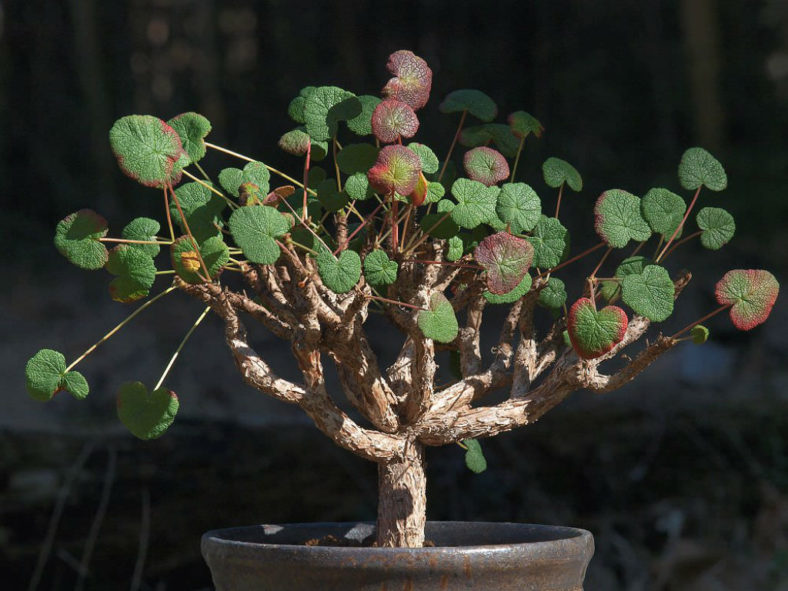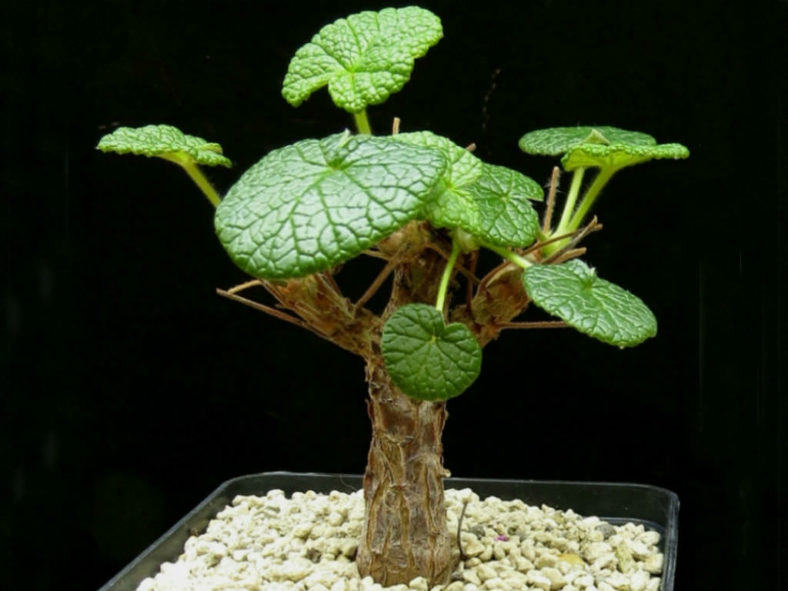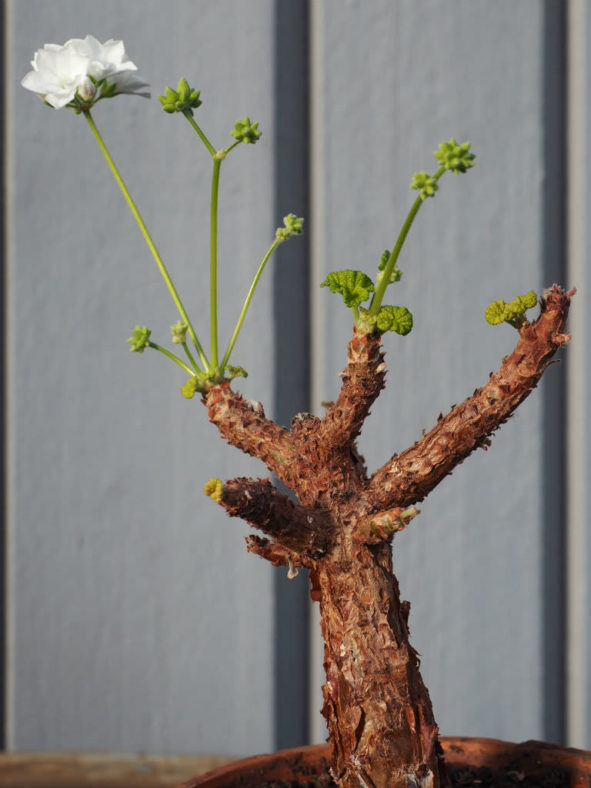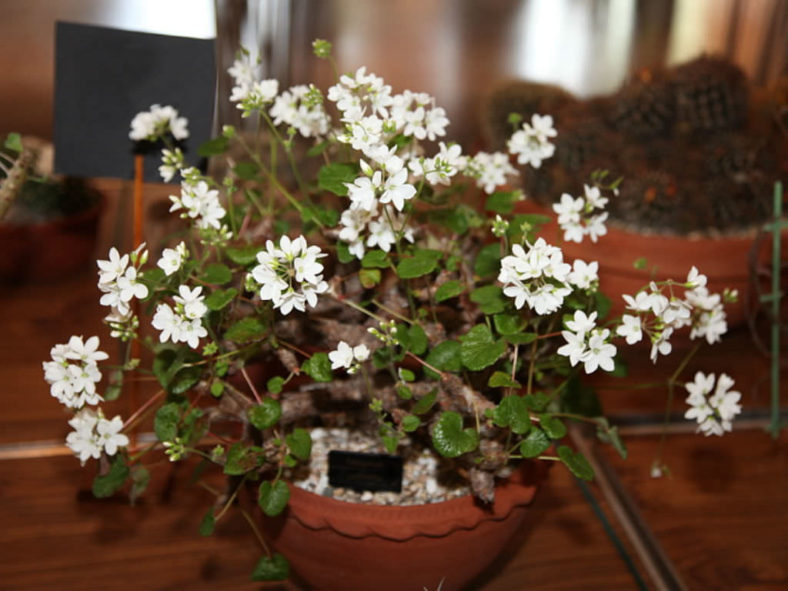Scientific Name
Pelargonium cotyledonis (L.) L'Hér.
Common Name(s)
Old Father Live Forever, Hollyhock-leaved Pelargonium
Synonym(s)
Erodium sempervivum, Geranium cotyledonis, Isopetalum cotyledonis, Pelargonium cotyledon, Pelargonium cotyledonifolium
Scientific Classification
Family: Geraniaceae
Genus: Pelargonium
Description
Pelargonium cotyledonis is a sparsely branched succulent that is leafless most of the year and produces a loose rosette of orbicular leaves in summer. It can grow up to 12 inches (30 cm) tall. The leaves can measure up to 2 inches (5 cm) long and are attached to the branches by slender stalks up to 3.2 inches (8 cm) long.
In the center of the rosette is produced a slender scape bearing loosely branched umbels of flowers and reaching up to 8 inches (20 cm) in height. The leathery, prominently-veined leaves and the regular pure white flowers distinguish this species from others.

Hardiness
USDA hardiness zones 10a to 11b: from 30 °F (−1.1 °C) to 50 °F (+10 °C).
How to Grow and Care
Most Pelargoniums are grown in pots in a greenhouse or conservatory. They can also be grown inside the house but need to be in the sunniest area possible. Many species do well when planted outside in an open area to become larger plants. However, this can be a problem if you want to replant them in a pot for the winter months. Cuttings can be taken in the summertime instead to make new plants.
Succulent species grow well with other succulents and cacti. Pelargoniums are very attractive and one of the toughest and most durable succulents.
The main requirement of Pelargoniums is a warm, sunny, sheltered location. Many species will tolerate drought conditions for short periods. They will show you when they want water by producing a crop of new leaves. Almost all species are winter growers. After the summer, you can wait until the plant begins to grow, but you can also give them light sprayings or showers to stimulate their growth. They like water when they are in full leaves but always keep the soil dry out between waterings. Overwatering can cause unnatural growth.
See more at How to Grow and Care for Pelargonium.
Origin
Pelargonium cotyledonis is endemic to the island of Saint Helena in the South Atlantic Ocean.
Links
- Back to genus Pelargonium
- Succupedia: Browse succulents by Scientific Name, Common Name, Genus, Family, USDA Hardiness Zone, Origin, or cacti by Genus
Photo Gallery
Click on a photo to see a larger version.


